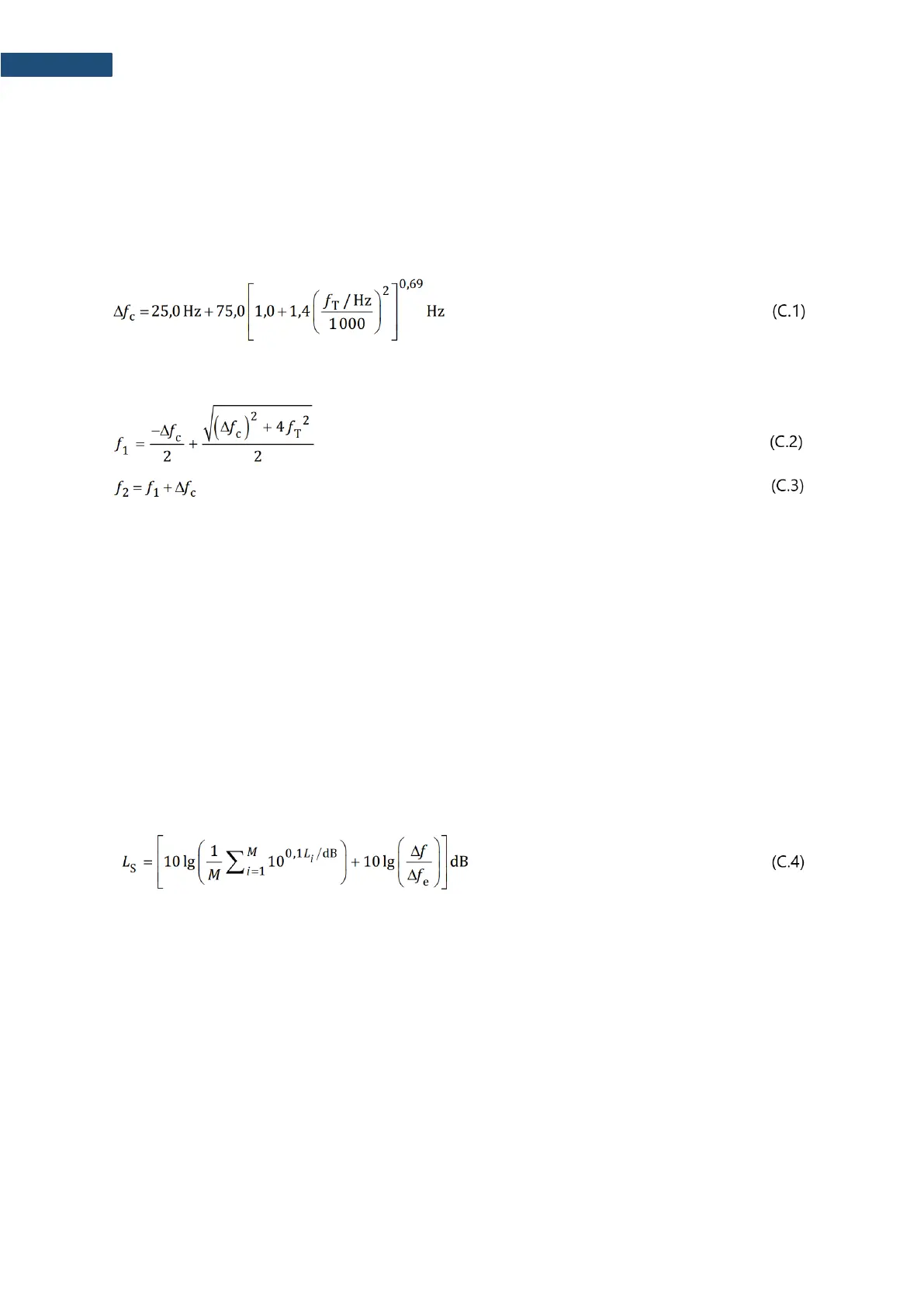F.2.3. Determination of prominent tones
Bandwidth and centre frequency of critical bands
The widths Δf
c
of the critical band about the tone frequency f
T
is given in equation (C.1):
The corner frequencies can be delivered as given in equations (C.2) and (C.3), since the central frequency of
the critical band is a geometric mean of the boundaries:
For the definition of the centre frequency of a critical band, only tones with level higher than the adjoining ones
should be regarded as significant.
NOTE. A tonal audibility is performed for a tone only if its distinctness is at least 70%, that means it should
satisfy the set of requirements that is given by the following standard together with edge steepness and maximal
bandwidth.
Mean narrow-band level of the masking noise, L
s
The mean narrow-band level is derived in an iterative procedure from the lines of the critical band about the
line under investigation. The investigation range is determined by boundaries of the critical band of a pending
tone.
The procedure commences with the energy averaging of all lines of the critical band with the exception of the
central frequency line. The next step is repeating the procedure excluding the lines above the mean level
calculated in the previous step by 6 dB.
The mean narrow-band level is given by equation (C.4).
The procedure ends, if the subsequent mean narrow-band sound level of the masking noise is equal to the
calculated in the current calculations loop within a tolerance of ±0.005 dB. The procedure also ends, if the
number of lines contributing to the subsequent mean narrow-band level to the right or left of the line under
investigation falls below a value of 5.
NOTE 1. The second addend of the equation (C.4) could be simplified and used as a constant summand equal
to -1.76 dB. It’s possible since we apply the Hanning window, that provides the effective bandwidth Δf
e
be 1.5
times the frequency resolution Δf.
NOTE 2. If the iteration is discontinued, because the remaining number of spectral lines to be averaged on one
or both sides fall below 5, then the audibility may be somewhat greater than the audibility calculated with this
mean narrow-band level.
NOTE 3. In principle, a tone may only be present if the level of the spectral line considered is at least 6 dB
greater than the corresponding mean narrow-band level L
s
.
